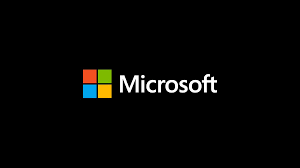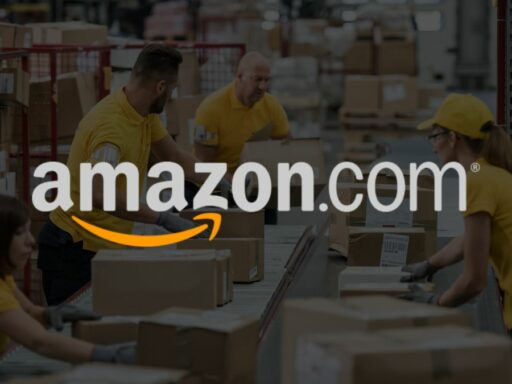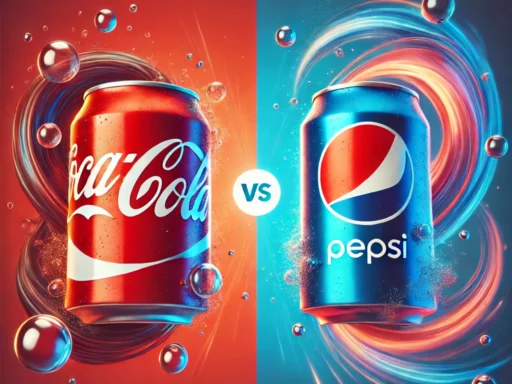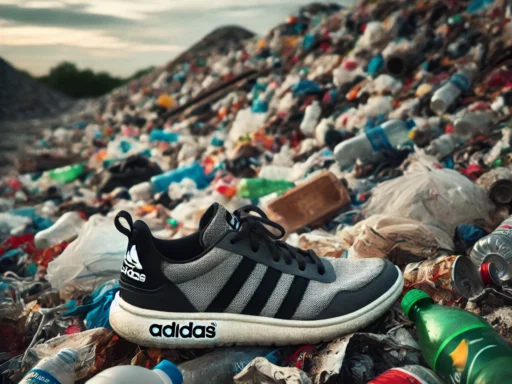Microsoft, a global leader in technology and innovation, is deeply committed to sustainability, with a strong focus on reducing carbon emissions, enhancing energy efficiency, and driving positive environmental change. The company has set ambitious sustainability goals, including becoming carbon negative by 2030 and eliminating its historical carbon emissions by 2050. Through its sustainability initiatives, Microsoft is aligning its operations with the global fight against climate change, and is also empowering its customers, partners, and communities to embrace more sustainable practices through technology.
Microsoft’s sustainability approach is holistic, addressing not only environmental factors but also social impact, innovation, and technology integration. In its most recent sustainability report, Microsoft highlights its commitment to responsible business practices, such as reducing carbon emissions across its supply chain, advancing renewable energy, and ensuring diversity and inclusion in the workforce.
Sources:
https://www.microsoft.com/sustainability
https://www.microsoft.com/en-us/sustainability/reports
Sustainability Strategy and Goals
Microsoft’s sustainability strategy is based on its core values of innovation, environmental stewardship, and social responsibility. The company’s sustainability goals are ambitious and comprehensive, focusing on carbon neutrality, renewable energy, waste reduction, and advancing social equity.
Net Zero and Carbon Emissions
Microsoft is committed to becoming carbon negative by 2030, a goal that involves reducing its carbon emissions and removing more carbon from the environment than it emits.
- Carbon Negative by 2030: Microsoft aims to reduce its emissions by at least 50% by 2030 and to remove more carbon than it emits across all its operations and supply chain.
- Carbon Removal Technologies: Microsoft is investing heavily in carbon removal technologies, such as direct air capture, soil carbon sequestration, and afforestation.
- Historical Carbon Emissions: The company is also committed to eliminating its historical carbon emissions by 2050, addressing emissions dating back to its founding in 1975.
- Scope 3 Emissions: Microsoft is working to reduce Scope 3 emissions, which stem from its supply chain, product use, and employee travel, and has set specific targets for supplier engagement and emission reductions.
Sources: https://www.microsoft.com/sustainability
Renewable Energy and Clean Power
Microsoft is a global leader in renewable energy adoption and aims to achieve 100% renewable energy use across all its operations. The company is investing in large-scale renewable energy projects to power its data centers and facilities with clean energy.
- 100% Renewable Energy: Microsoft has been sourcing 100% renewable energy for its global operations since 2014 and continues to expand its renewable energy initiatives.
- Renewable Energy Procurement: The company has entered into long-term contracts to purchase renewable energy directly, becoming one of the largest corporate buyers of renewable energy globally.
- Energy-Efficient Data Centers: Microsoft’s data centers, which are critical to its cloud operations, are designed with energy efficiency in mind. The company uses advanced technologies, such as AI, to optimize energy consumption and improve the efficiency of its data centers.
Sources: https://www.microsoft.com/sustainability
Circular Economy and Waste Management
Microsoft is committed to the principles of the circular economy, focusing on reducing waste, improving recycling, and extending the lifecycle of products and materials. The company has set goals for waste diversion and responsible e-waste management.
- Zero Waste Operations: Microsoft has committed to achieving zero waste in its direct operations by 2030, including designing products and services with circularity in mind.
- Sustainable Packaging: The company is working to reduce the environmental impact of its packaging and increase the use of recycled and recyclable materials.
- E-Waste Recycling: Microsoft has implemented an e-waste recycling program that ensures responsible disposal and recycling of electronics, including refurbished devices and components.
Sources: https://www.microsoft.com/sustainability
Diversity, Equity, and Inclusion
In addition to its environmental initiatives, Microsoft is focused on advancing diversity, equity, and inclusion (DEI) within the company and beyond. Microsoft’s DEI efforts are embedded in its sustainability strategy, ensuring that social equity is a key part of the company’s sustainability journey.
- Workplace Diversity: Microsoft has made significant progress in increasing the diversity of its workforce, with specific targets for hiring women and underrepresented groups in technical and leadership roles.
- Inclusive Culture: The company promotes an inclusive culture where employees of all backgrounds can thrive. Microsoft supports employees through various employee resource groups, mentorship programs, and inclusive leadership initiatives.
- Pay Equity: Microsoft conducts regular pay equity audits and has committed to closing gender and racial pay gaps within the organization.
Sources: https://www.microsoft.com/sustainability
Community and Social Impact
Microsoft is committed to using its technology to drive positive social impact and improve communities worldwide. The company focuses on education, digital inclusion, and providing technology to empower underserved populations.
- Digital Inclusion: Microsoft’s initiatives are aimed at ensuring more people have access to technology and the digital skills needed to succeed in the modern economy.
- Community Engagement: Microsoft has donated millions of dollars to nonprofit organizations focused on health, education, and economic empowerment.
- AI for Social Good: The company uses AI to tackle complex societal issues such as climate change, public health, and disaster response.
Sources: https://www.microsoft.com/sustainability
Key Sustainability Innovations and Technologies
Microsoft is using technology to power its sustainability efforts, particularly in the areas of carbon reduction, renewable energy, and waste management. The company is also innovating to help other businesses and organizations achieve their sustainability goals through cloud-based services and AI-powered tools.
- AI for Sustainability: Microsoft is leveraging artificial intelligence to reduce carbon emissions, optimize energy use, and accelerate the development of carbon capture technologies.
- Sustainable Cloud Services: Microsoft’s cloud services, including Azure, are powered by renewable energy, and the company offers sustainable cloud solutions to help customers reduce their own carbon footprints.
- Carbon-Free Energy Grid: Microsoft is working on developing a carbon-free energy grid, where renewable energy is available at all times, leveraging innovations in storage, grid management, and renewable energy generation.
- AI for Climate Research: Microsoft is using AI and machine learning to assist in climate research, providing tools to monitor and predict environmental changes, assess carbon emissions, and track sustainable practices.
Sources: https://www.microsoft.com/sustainability
Measurable Impacts
Microsoft’s sustainability efforts are yielding measurable results, and the company tracks its progress against its goals:
- Carbon Emissions: Microsoft has committed to being carbon negative by 2030, with an aggressive roadmap to reduce emissions and invest in carbon removal technologies.
- Energy Efficiency: The company has optimized its data centers and operations to be energy-efficient, reducing energy consumption per unit of computing.
- Waste Diversion: Microsoft is on track to achieve zero waste in its direct operations by 2030 and continues to improve recycling and waste management across its global offices and facilities.
- Diversity and Inclusion: Over 40% of Microsoft’s leadership roles are now filled by women and underrepresented groups, and the company continues to work toward improving workforce diversity.
Sources: https://www.microsoft.com/sustainability
Challenges and Areas for Improvement
While Microsoft has made impressive progress in its sustainability journey, there are several areas that require continued focus and improvement:
- Scope 3 Emissions: Managing Scope 3 emissions, which are the most challenging to track and reduce, remains a key hurdle for Microsoft. The company is working with suppliers to address emissions across its supply chain, but full engagement and transparency will take time.
- Circular Economy Practices: Microsoft is committed to circularity but still faces challenges in ensuring that all its products are fully recyclable and designed with end-of-life in mind.
- Climate Justice and Equity: Ensuring that sustainability efforts also benefit communities disproportionately impacted by climate change remains a key focus for Microsoft. The company is investing in programs to ensure equitable access to digital tools and resources.
Sources: https://www.microsoft.com/sustainability
Future Plans and Long-Term Goals
Microsoft has set a clear and ambitious sustainability vision for the future. The company’s long-term goals focus on climate action, renewable energy, circular economy practices, and diversity and inclusion.
Carbon Negative by 2030
Microsoft is committed to achieving carbon negative status by 2030, which includes reducing its emissions and removing more carbon from the atmosphere than it emits. The company is investing in carbon removal technologies and working with partners to develop scalable solutions.
Renewable Energy and Clean Power
The company will continue to expand its renewable energy procurement and strives to make its energy usage 100% carbon-free by 2030. Additionally, Microsoft is working to ensure that its energy use is available on a 24/7 basis, making renewable energy available at all times.
Circular Economy and Sustainability in Products
Microsoft aims to achieve zero waste by 2030 across its global operations. The company is also focused on designing products for longevity, repairability, and recyclability, ensuring that the lifecycle of its devices and components is sustainable.
AI for Climate Solutions
Microsoft plans to continue leveraging AI to provide climate solutions, such as carbon tracking, energy optimization, and climate research. The company will also expand its AI for Social Good programs to further environmental goals.
Are They Doing What They Are Aiming?
Microsoft is well on track to meet its ambitious sustainability goals. Its commitments to carbon negative operations, renewable energy, and zero waste reflect its strong focus on reducing environmental impact. However, achieving carbon neutrality across its entire value chain (Scope 3 emissions) remains a significant challenge that will require continued investment and supplier engagement.
Our Thoughts
Microsoft’s sustainability strategy is one of the most comprehensive and ambitious in the tech industry. The company has made significant progress toward achieving carbon negative operations and is a leader in renewable energy adoption. However, managing Scope 3 emissions, ensuring circularity in its products, and promoting equitable access to technology remain areas for continued focus. Microsoft’s commitment to leveraging technology for sustainability and climate solutions positions it well to lead the tech sector in driving positive environmental change.
Sources:
https://www.microsoft.com/sustainability
https://www.microsoft.com/en-us/sustainability/reports





